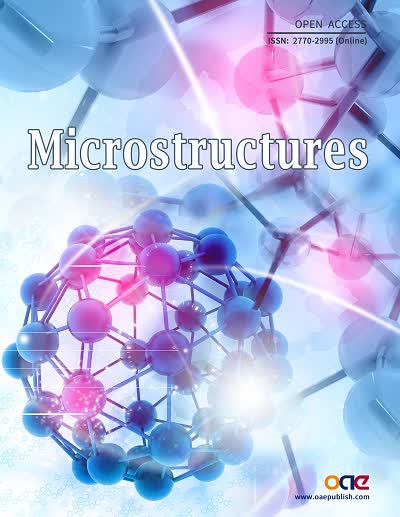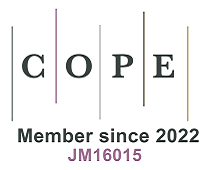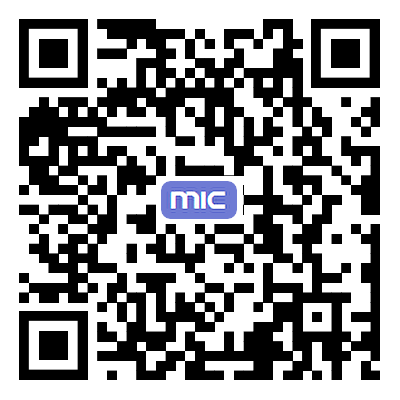REFERENCES
1. Kittner N, Lill F, Kammen DM. Energy storage deployment and innovation for the clean energy transition. Nat Energy 2017;2:1-6.
2. Oudenhoven JFM, Baggetto L, Notten PHL. All-solid-state lithium-ion microbatteries: a review of various three-dimensional concepts. Adv Energy Mater 2011;1:10-33.
3. Kyeremateng NA, Brousse T, Pech D. Microsupercapacitors as miniaturized energy-storage components for on-chip electronics. Nat Nanotechnol 2017;12:7-15.
4. Hong X, Ma X, He L, et al. Regulating lattice-water-adsorbed ions to optimize intercalation potential in 3D prussian blue based multi-ion microbattery. Small 2021;17:e2007791.
5. Pan X, Hong X, Xu L, Li Y, Yan M, Mai L. On-chip micro/nano devices for energy conversion and storage. Nano Today 2019;28:100764.
6. Mckelvey K, Brunet Cabré M, Esmeraldo Paiva A. Continuum simulations for microscale 3D batteries. Curr Opin Electrochem 2020;21:76-83.
7. Yue C, Li J, Lin L. Fabrication of Si-based three-dimensional microbatteries: a review. Front Mech Eng 2017;12:459-76.
8. Yang Y, Yuan W, Zhang X, et al. Overview on the applications of three-dimensional printing for rechargeable lithium-ion batteries. Appl Energy 2020;257:114002.
9. Xu B, Qian D, Wang Z, Meng YS. Recent progress in cathode materials research for advanced lithium ion batteries. Mater Sci Eng R Rep 2012;73:51-65.
10. Zhang X, Chen Y, Ma F, et al. Regulating Li uniform deposition by lithiophilic interlayer as Li-ion redistributor for highly stable lithium metal batteries. Chem Eng J 2022;436:134945.
11. Zhang X, Chen Y, Srinivas K, et al. Lithiophilic Mo3N2/MoN as multifunctional interlayer for dendrite-free and ultra-stable lithium metal batteries. J Colloid Interface Sci 2022;612:332-41.
12. Shi Y, Fu J, Hui K, et al. Promoting the electrochemical properties of yolk-shell-structured CeO2 composites for lithium-ion batteries. Microstructures 2021;1:2021005.
13. Park S, Jin HJ, Yun YS. Advances in the design of 3D-structured electrode materials for lithium-metal anodes. Adv Mater 2020;32:e2002193.
14. Zhu Z, Kan R, Hu S, et al. Recent advances in high-performance microbatteries: construction, application, and perspective. Small 2020;16:e2003251.
15. Zoller F, Böhm D, Bein T, Fattakhova-Rohlfing D. Tin oxide based nanomaterials and their application as anodes in lithium-ion batteries and beyond. ChemSusChem 2019;12:4140-59.
16. Fang X, Peng H. A revolution in electrodes: recent progress in rechargeable lithium-sulfur batteries. Small 2015;11:1488-511.
17. Pei P, Wang K, Ma Z. Technologies for extending zinc-air battery’s cyclelife: A review. Appl Energy 2014;128:315-24.
18. Yang H, Li H, Li J, et al. The rechargeable aluminum battery: opportunities and challenges. Angew Chem Int Ed Engl 2019;58:11978-96.
19. Sharifi T, Valvo M, Gracia-espino E, Sandström R, Edström K, Wågberg T. Hierarchical self-assembled structures based on nitrogen-doped carbon nanotubes as advanced negative electrodes for Li-ion batteries and 3D microbatteries. J Power Sources 2015;279:581-92.
20. Tang H, Karnaushenko DD, Neu V, et al. Stress-actuated spiral microelectrode for high-performance lithium-ion microbatteries. Small 2020;16:e2002410.
21. Zhang M, Mei H, Chang P, Cheng L. 3D printing of structured electrodes for rechargeable batteries. J Mater Chem A 2020;8:10670-94.
22. Liu N, Gao Y. Recent progress in micro-supercapacitors with in-plane interdigital electrode architecture. Small 2017;13:1701989.
23. Duan Y, You G, Sun K, et al. Advances in wearable textile-based micro energy storage devices: structuring, application and perspective. Nanoscale Adv 2021;3:6271-93.
24. Wu Z, Parvez K, Feng X, Müllen K. Photolithographic fabrication of high-performance all-solid-state graphene-based planar micro-supercapacitors with different interdigital fingers. J Mater Chem A 2014;2:8288.
25. Choi CS, Lau J, Hur J, Smith L, Wang C, Dunn B. Synthesis and properties of a photopatternable lithium-ion conducting solid electrolyte. Adv Mater 2018;30:1703772.
26. Hur JI, Smith LC, Dunn B. High areal energy density 3D lithium-ion microbatteries. Joule 2018;2:1187-201.
27. Mamidi S, Kakunuri M, Sharma CS. Fabrication of SU-8 derived three-dimensional carbon microelectrodes as high capacity anodes for lithium-ion batteries. ECS Trans 2018;85:21-7.
28. Lai W, Wang Y, Lei Z, et al. High performance, environmentally benign and integratable Zn//MnO2 microbatteries. J Mater Chem A 2018;6:3933-40.
29. Wang Y, Hong X, Guo Y, et al. Wearable Textile-Based Co-Zn alkaline microbattery with high energy density and excellent reliability. Small 2020;16:e2000293.
30. Lobo DE, Banerjee PC, Easton CD, Majumder M. Miniaturized supercapacitors: focused ion beam reduced graphene oxide supercapacitors with enhanced performance metrics. Adv Energy Mater 2015;5:1500665.
31. Pikul JH, Gang Zhang H, Cho J, Braun PV, King WP. High-power lithium ion microbatteries from interdigitated three-dimensional bicontinuous nanoporous electrodes. Nat Commun 2013;4:1732.
33. Costa C, Gonçalves R, Lanceros-méndez S. Recent advances and future challenges in printed batteries. Energy Storage Mater 2020;28:216-34.
34. Zhang Y, Zhu Y, Zheng S, et al. Ink formulation, scalable applications and challenging perspectives of screen printing for emerging printed microelectronics. J Energy Chem 2021;63:498-513.
35. Kumar R, Shin J, Yin L, You J, Meng YS, Wang J. All-printed, stretchable Zn-Ag2O rechargeable battery via hyperelastic binder for self-powering wearable electronics. Adv Energy Mater 2017;7:1602096.
36. Hong SY, Jee SM, Ko Y, et al. Intrinsically stretchable and printable lithium-ion battery for free-form configuration. ACS Nano 2022;16:2271-81.
37. Nayak L, Mohanty S, Nayak SK, Ramadoss A. A review on inkjet printing of nanoparticle inks for flexible electronics. J Mater Chem C 2019;7:8771-95.
38. Choi K, Ahn DB, Lee S. Current status and challenges in printed batteries: toward form factor-free, monolithic integrated power sources. ACS Energy Lett 2018;3:220-36.
39. Milroy CA, Jang S, Fujimori T, Dodabalapur A, Manthiram A. Inkjet-printed lithium-sulfur microcathodes for all-printed, integrated nanomanufacturing. Small 2017;13:1603786.
40. Lawes S, Sun Q, Lushington A, Xiao B, Liu Y, Sun X. Inkjet-printed silicon as high performance anodes for Li-ion batteries. Nano Energy 2017;36:313-21.
41. Gu Y, Wu A, Sohn H, Nicoletti C, Iqbal Z, Federici JF. Fabrication of rechargeable lithium ion batteries using water-based inkjet printed cathodes. J Manuf Process 2015;20:198-205.
43. Cohen E, Menkin S, Lifshits M, et al. Novel rechargeable 3D-Microbatteries on 3D-printed-polymer substrates: Feasibility study. Electrochim Acta 2018;265:690-701.
44. Kim C, Ahn BY, Wei TS, et al. High-power aqueous zinc-ion batteries for customized electronic devices. ACS Nano 2018;12:11838-46.
45. Yu Y, Chen M, Wang S, et al. Laser sintering of printed anodes for al-air batteries. J Electrochem Soc 2018;165:A584-92.
46. Lacey SD, Kirsch DJ, Li Y, et al. Extrusion-based 3D printing of hierarchically porous advanced battery electrodes. Adv Mater 2018;30:e1705651.
47. Hu J, Jiang Y, Cui S, et al. 3D-Printed cathodes of LiMn1-xFexPO4 nanocrystals achieve both ultrahigh rate and high capacity for advanced lithium-ion battery. Adv Energy Mater 2016;6:1600856.
48. Ding J, Shen K, Du Z, Li B, Yang S. 3D-Printed hierarchical porous frameworks for sodium storage. ACS Appl Mater Interfaces 2017;9:41871-7.
49. Cai J, Fan Z, Jin J, et al. Expediting the electrochemical kinetics of 3D-printed sulfur cathodes for Li-S batteries with high rate capability and areal capacity. Nano Energy 2020;75:104970.
50. Park JU, Hardy M, Kang SJ, et al. High-resolution electrohydrodynamic jet printing. Nat Mater 2007;6:782-9.
51. Ning H, Pikul JH, Zhang R, et al. Holographic patterning of high-performance on-chip 3D lithium-ion microbatteries. Proc Natl Acad Sci USA 2015;112:6573-8.
52. Zhuang P, Sun Y, Li L, et al. FIB-patterned nano-supercapacitors: minimized size with ultrahigh performances. Adv Mater 2020;32:e1908072.
53. Kanehori K, Matsumoto K, Miyauchi K, Kudo T. Thin film solid electrolyte and its application to secondary lithium cell. Solid State Ionics 1983;9-10:1445-8.
54. Nakano H, Dokko K, Sugaya J, Yasukawa T, Matsue T, Kanamura K. All-solid-state micro lithium-ion batteries fabricated by using dry polymer electrolyte with micro-phase separation structure. Electrochem Commun 2007;9:2013-7.
55. Koo M, Park KI, Lee SH, et al. Bendable inorganic thin-film battery for fully flexible electronic systems. Nano Lett 2012;12:4810-6.
56. Oukassi S, Bazin A, Secouard C, et al. Millimeter scale thin film batteries for integrated high energy density storage. In 2019 IEEE International Electron Devices Meeting (IEDM); 2019, p.26.1.1-26.1.4. (ISBN No. 2156-017X)
57. Sha M, Zhao H, Lei Y. Updated insights into 3D architecture electrodes for micropower sources. Adv Mater 2021;33:e2103304.
58. Wang J, Shen Z. Modeling-guided understanding microstructure effects in energy storage dielectrics. Microstructures 2021;1:2021006.
59. Baggetto L, Niessen RAH, Roozeboom F, Notten PHL. High energy density all-solid-state batteries: a challenging concept towards 3D integration. Adv Funct Mater 2008;18:1057-66.
60. Lyu Z, Lim GJ, Koh JJ, et al. Design and manufacture of 3D-printed batteries. Joule 2021;5:89-114.
61. Sun K, Wei TS, Ahn BY, Seo JY, Dillon SJ, Lewis JA. 3D printing of interdigitated Li-ion microbattery architectures. Adv Mater 2013;25:4539-43.
62. Xu Z, Liu X, Luo Y, Zhou L, Kim J. Nanosilicon anodes for high performance rechargeable batteries. Prog Mater Sci 2017;90:1-44.
63. Yue C, Zhang S, Yu Y, et al. Laser-patterned Si/TiN/Ge anode for stable Si based Li-ion microbatteries. J Power Sources 2021;493:229697.
64. Zhao X, Kalidas N, Lehto V. Self-standing mesoporous Si films as anodes for lithium-ion microbatteries. J Power Sources 2022;529:231269.
65. Yue C, Wu M, Cheng B, et al. Fabrication of multilayer Si/TiN/Sb NR arrays as anode for 3D Si-based lithium/sodium ion microbatteries. Adv Mater Interfaces 2020;7:2001043.
66. Sternad M, Hirtler G, Sorger M, et al. A Lithium-silicon microbattery with anode and housing directly made from semiconductor grade monocrystalline Si. Adv Mater Technol 2022;7:2100405.
67. Lyu Z, Lim GJ, Guo R, et al. 3D-printed electrodes for lithium metal batteries with high areal capacity and high-rate capability. Energy Storage Mater 2020;24:336-42.
68. Cao D, Xing Y, Tantratian K, et al. 3D Printed High-performance lithium metal microbatteries enabled by nanocellulose. Adv Mater 2019;31:e1807313.
69. Shen K, Li B, Yang S. 3D printing dendrite-free lithium anodes based on the nucleated MXene arrays. Energy Storage Mater 2020;24:670-5.
70. Sun P, Li X, Shao J, Braun PV. High-performance packaged 3D lithium-ion microbatteries fabricated using imprint lithography. Adv Mater 2021;33:e2006229.
72. Cao T, Shi X, Zou J, Chen Z. Advances in conducting polymer-based thermoelectric materials and devices. Microstructures 2021;1:2021007.
73. Werner JG, Rodríguez-calero GG, Abruña HD, Wiesner U. Block copolymer derived 3-D interpenetrating multifunctional gyroidal nanohybrids for electrical energy storage. Energy Environ Sci 2018;11:1261-70.
74. Ergang NS, Fierke MA, Wang Z, Smyrl WH, Stein A. Fabrication of a fully infiltrated three-dimensional solid-state interpenetrating electrochemical cell. J Electrochem Soc 2007;154:A1135.
75. Li Y, Zhu M, Bandari VK, et al. On-Chip batteries for dust-sized computers. Adv Energy Mater 2022;12:2270051.
76. Cha H, Lee Y, Kim J, Park M, Cho J. Flexible 3D interlocking lithium-ion batteries. Adv Energy Mater 2018;8:1801917.
77. Liu W, Chen Z, Zhou G, et al. 3D porous sponge-inspired electrode for stretchable lithium-ion batteries. Adv Mater 2016;28:3578-83.
78. Li H, Ding Y, Ha H, et al. An all-stretchable-component sodium-ion full battery. Adv Mater 2017;29:1700898.
79. Kang S, Hong SY, Kim N, et al. Stretchable lithium-ion battery based on re-entrant micro-honeycomb electrodes and cross-linked gel electrolyte. ACS Nano 2020;14:3660-8.
80. Liu W, Chen J, Chen Z, et al. Stretchable lithium-ion batteries enabled by device-scaled wavy structure and elastic-sticky separator. Adv Energy Mater 2017;7:1701076.
81. Song Z, Wang X, Lv C, et al. Kirigami-based stretchable lithium-ion batteries. Sci Rep 2015;5:10988.
82. Xu S, Zhang Y, Cho J, et al. Stretchable batteries with self-similar serpentine interconnects and integrated wireless recharging systems. Nat Commun 2013;4:1543.
83. Nasreldin M, Delattre R, Calmes C, et al. High performance stretchable Li-ion microbattery. Energy Storage Mater 2020;33:108-15.
84. Kubota K, Dahbi M, Hosaka T, Kumakura S, Komaba S. Towards K-Ion and Na-Ion batteries as “Beyond Li-Ion”. Chem Rec 2018;18:459-79.
85. Ni J, Dai A, Yuan Y, Li L, Lu J. Three-Dimensional microbatteries beyond lithium ion. Matter 2020;2:1366-76.
86. Shi F, Chen C, Xu Z. Recent advances on electrospun nanofiber materials for post-lithium ion batteries. Adv Fiber Mater 2021;3:275-301.
87. Yabuuchi N, Kubota K, Dahbi M, Komaba S. Research development on sodium-ion batteries. Chem Rev 2014;114:11636-82.
88. Park J, Xu ZL, Kang K. Solvated ion intercalation in graphite: sodium and beyond. Front Chem 2020;8:432.
89. Xu Z, Park J, Yoon G, Kim H, Kang K. Graphitic carbon materials for advanced sodium-ion batteries. Small Methods 2019;3:1800227.
90. Kuratani K, Uemura N, Senoh H, Takeshita H, Kiyobayashi T. Conductivity, viscosity and density of MClO4 (M = Li and Na) dissolved in propylene carbonate and γ-butyrolactone at high concentrations. J Power Sources 2013;223:175-82.
91. Zheng S, Huang H, Dong Y, et al. Ionogel-based sodium ion micro-batteries with a 3D Na-ion diffusion mechanism enable ultrahigh rate capability. Energy Environ Sci 2020;13:821-9.
92. Muldoon J, Bucur CB, Gregory T. Quest for nonaqueous multivalent secondary batteries: magnesium and beyond. Chem Rev 2014;114:11683-720.
93. Chen C, Shi F, Zhang S, Su Y, Xu ZL. Ultrastable and high energy calcium rechargeable batteries enabled by calcium intercalation in a NASICON cathode. Small 2022;18:e2107853.
94. Chen C, Shi F, Xu Z. Advanced electrode materials for nonaqueous calcium rechargeable batteries. J Mater Chem A 2021;9:11908-30.
95. Hao Z, Xu L, Liu Q, et al. On-Chip Ni-Zn microbattery based on hierarchical ordered porous Ni@Ni(OH)2 Microelectrode with ultrafast ion and electron transport kinetics. Adv Funct Mater 2019;29:1808470.
96. Bi S, Wan F, Wang S, Jia S, Tian J, Niu Z. Flexible and tailorable quasi-solid-state rechargeable Ag/Zn microbatteries with high performance. Carbon Energy 2021;3:167-75.
97. Zhao J, Sonigara KK, Li J, et al. A Smart flexible zinc battery with cooling recovery ability. Angew Chem Int Ed Engl 2017;56:7871-5.
98. Jin X, Song L, Dai C, et al. A flexible aqueous zinc-iodine microbattery with unprecedented energy density. Adv Mater 2022;34:e2109450.
99. Wang S, Jiao S, Song W, et al. A novel dual-graphite aluminum-ion battery. Energy Storage Mater 2018;12:119-27.
100. Komaba S, Murata W, Ishikawa T, et al. Electrochemical Na insertion and solid electrolyte interphase for hard-carbon electrodes and application to Na-Ion batteries. Adv Funct Mater 2011;21:3859-67.
101. Parker JF, Chervin CN, Pala IR, et al. Rechargeable nickel-3D zinc batteries: an energy-dense, safer alternative to lithium-ion. Science 2017;356:415-8.
102. Yirka B. Phinergy demonstrates aluminum-air battery capable of fueling an electric vehicle for 1000 miles. Available from: https://phys.org/news/2013-03-phinergy-aluminum-air-battery-capable-fueling.html [Last accessed on 30 May 2022].
103. Cheong WH, Oh B, Kim S, et al. Platform for wireless pressure sensing with built-in battery and instant visualization. Nano Energy 2019;62:230-8.
104. Park J, Ahn DB, Kim J, et al. Printing of wirelessly rechargeable solid-state supercapacitors for soft, smart contact lenses with continuous operations. Sci Adv 2019;5:eaay0764.
105. An HS, Park YG, Kim K, Nam YS, Song MH, Park JU. High-resolution 3D printing of freeform, transparent displays in ambient air. Adv Sci (Weinh) 2019;6:1901603.
106. Zhu M, Schmidt OG. Tiny robots and sensors need tiny batteries - here’s how to do it. Nature 2021;589:195-7.
107. Um H, Choi K, Hwang I, Kim S, Seo K, Lee S. Monolithically integrated, photo-rechargeable portable power sources based on miniaturized Si solar cells and printed solid-state lithium-ion batteries. Energy Environ Sci 2017;10:931-40.
108. Hu B, Wang X. Advances in micro lithium-ion batteries for on-chip and wearable applications. J Micromech Microeng 2021;31:114002.
109. Ren J, Li L, Chen C, et al. Twisting carbon nanotube fibers for both wire-shaped micro-supercapacitor and micro-battery. Adv Mater 2013;25:1155-9, 1224.
110. Wang Y, Chen C, Xie H, et al. 3D-Printed All-Fiber Li-Ion Battery toward Wearable Energy Storage. Adv Funct Mater 2017;27:1703140.
111. Hu L, Wu H, La Mantia F, Yang Y, Cui Y. Thin, flexible secondary Li-ion paper batteries. ACS Nano 2010;4:5843-8.
112. Zheng S, Wu Z, Zhou F, et al. All-solid-state planar integrated lithium ion micro-batteries with extraordinary flexibility and high-temperature performance. Nano Energy 2018;51:613-20.
113. Nasreldin M, Mulatier S, Delattre R, Ramuz M, Djenizian T. Flexible and stretchable microbatteries for wearable technologies. Adv Mater Technol 2020;5:2000412.
114. Wang Z, Mo F, Ma L, et al. Highly Compressible cross-linked polyacrylamide hydrogel-enabled compressible Zn-MnO2 battery and a flexible battery-sensor system. ACS Appl Mater Interfaces 2018;10:44527-34.
115. Liu N, Zhou G, Yang A, et al. Direct electrochemical generation of supercooled sulfur microdroplets well below their melting temperature. Proc Natl Acad Sci USA 2019;116:765-70.
116. Zhou B, He D, Hu J, et al. A flexible, self-healing and highly stretchable polymer electrolyte via quadruple hydrogen bonding for lithium-ion batteries. J Mater Chem A 2018;6:11725-33.









